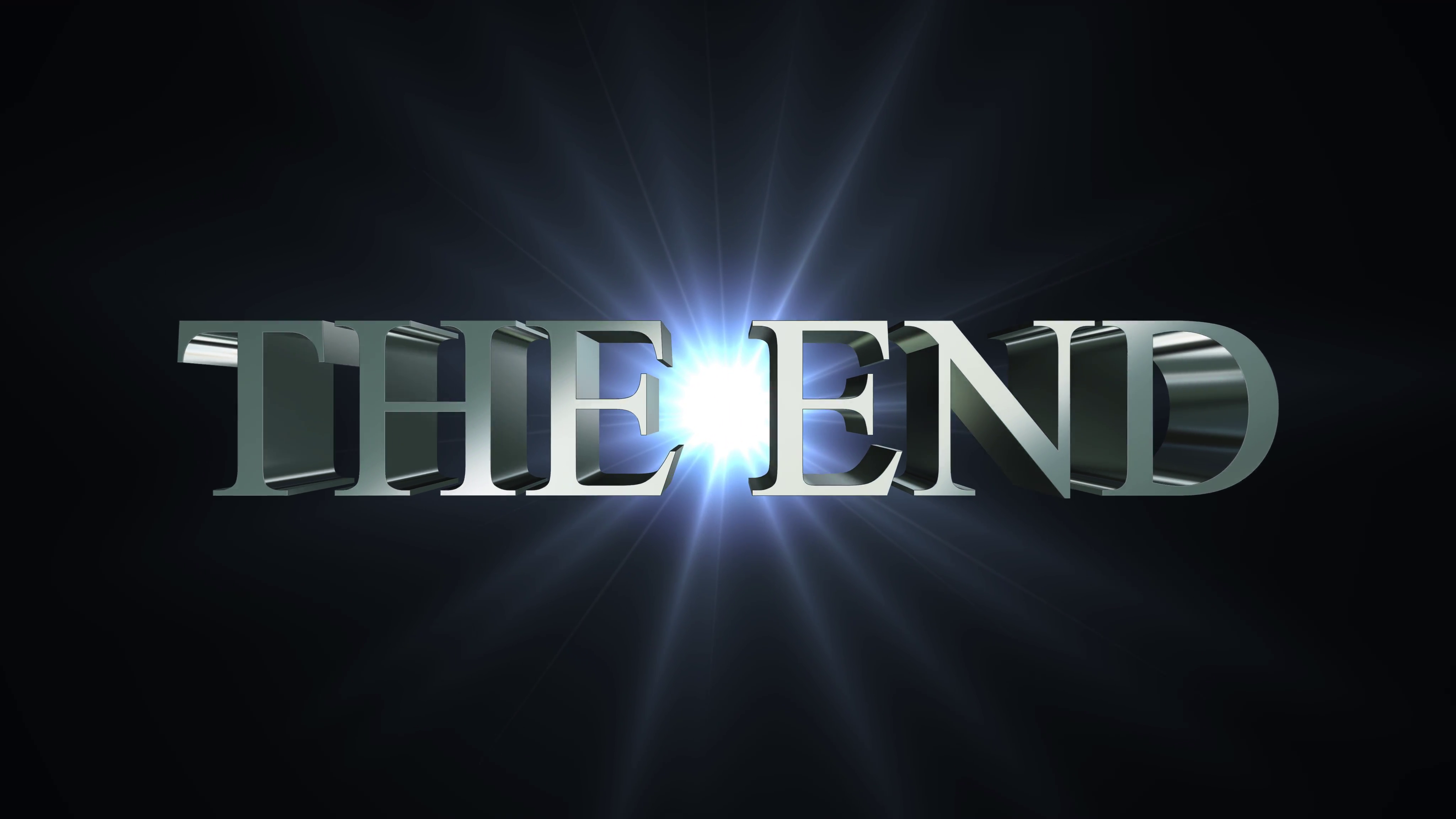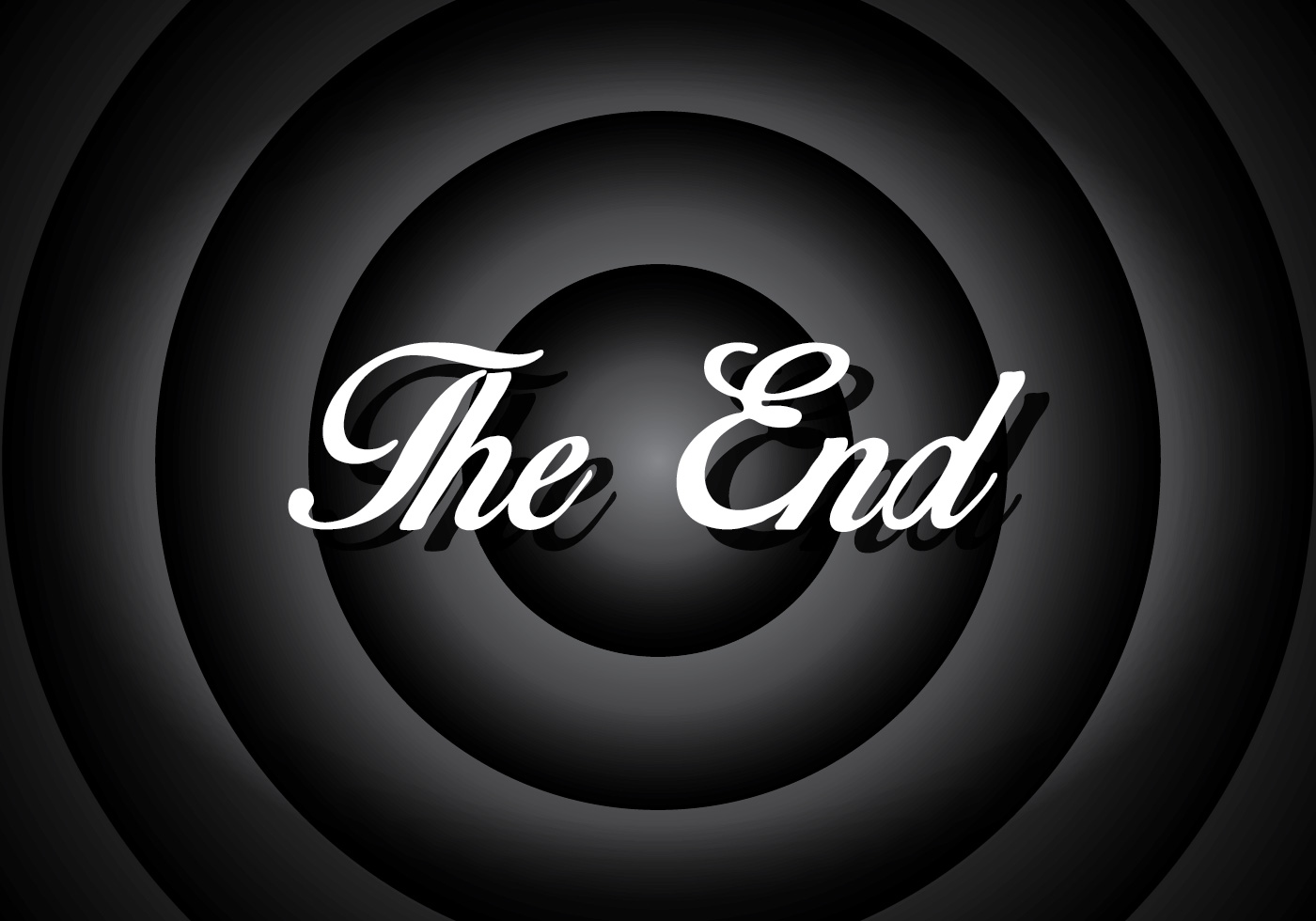Have you ever felt that moment when something truly wraps up, when a chapter closes, and you just know it's all done? It's a feeling, a sense of completion that, you know, really settles in. We often talk about beginnings, about fresh starts and exciting possibilities, but there's a unique power in understanding how things conclude. It's not always about a dramatic flourish; sometimes, it's a quiet, definitive punctuation mark, a moment where you sense that, yes, this is the end the end.
Think about it for a moment: how many times do we encounter a stopping point in our day-to-day lives, whether it's the last word of a good book, the final note of a song, or even just putting away the dishes after a meal? Each of these small acts of finishing contributes to a larger rhythm. They are, in a way, tiny declarations that something has reached its natural conclusion. It's pretty much a fundamental part of how we experience everything around us.
This idea of things coming to a close isn't just a philosophical concept; it's deeply woven into the fabric of how systems work, how we communicate, and how we even perceive order. From the way a sentence concludes on a page to the very structure of digital processes, the notion of an ending, a definitive "this is the end the end," plays a remarkably central part. It really shapes our expectations and helps us make sense of what comes next, or perhaps, what doesn't.
- Maury Show
- Bone Thugs N Harmon
- All Of Elon Musks Baby Moms
- Pics Of Sue Bird
- Kelsey Smith Overland Park Kansas
Table of Contents
- How Do We Know Something Is Really Over?
- The Subtle Art of a Line Break and This Is The End The End
- Making Sure It Stops When You Want It To
- Do All Endings Feel The Same?
- When Is A Stop Not A Full Stop? This Is The End The End
- The Abruptness of a Lost Connection
- Does Every Beginning Have a Perfect Match for This Is The End The End?
- Finding Closure in Digital Signals
How Do We Know Something Is Really Over?
It's an interesting thought, isn't it? How do we, or anything for that matter, signal that a process, a thought, or a series of actions has genuinely reached its stopping point? In the digital world, this is a very practical question, you know. Think about writing something, a simple message even. When you hit the "return" key, there's usually an invisible signal sent along with your words, a little nudge that says, "Okay, that's the close of this line." It's like putting a period at the close of a sentence, except it also tells the next bit of text to start fresh on a new row.
Sometimes, though, you don't want that automatic new row. Maybe you want words to flow right after each other, without any break in between. It's like when you're speaking and you just keep going, connecting one idea directly to the next without a pause. In those situations, you have to tell the system, "Hold on, don't put that usual break here. Just keep everything on the same line, please." This control over how things conclude visually is, in some respects, quite powerful. It allows for a smoother presentation, a continuous flow that otherwise wouldn't happen. This careful choice about how to wrap up a visual sequence truly defines how the information is taken in, making sure the reader or viewer experiences it exactly as intended. It’s pretty important for clarity.
The Subtle Art of a Line Break and This Is The End The End
Consider the everyday act of writing. When we put words down, whether on paper or a screen, we often use spaces and line breaks to organize our thoughts. A new line usually means a fresh idea or a continuation on a new plane. That's just how it usually works, a kind of default setting for how text appears. It’s a very common way things are presented. But what if you need to defy that norm? What if you want to keep everything connected, without that automatic step down to the next line? It's a bit like wanting to whisper a secret directly into someone's ear rather than shouting it across a room. You want that immediate, uninterrupted connection.
This choice, to have something print without adding a new line, means you're actively telling the system to keep things on the same level. It's a deliberate decision to maintain a continuous flow, to avoid any visual interruption. This is often used when you're building something piece by piece, like putting together a puzzle where each new piece has to connect directly to the last one without any gaps. It's a small detail, but it speaks volumes about the precision involved in how information is displayed. You know, it really shapes how content is consumed. So, the way you choose to conclude a line, or not conclude it with a break, can actually change the feeling of "this is the end the end" for that particular piece of information.
Making Sure It Stops When You Want It To
There's a real satisfaction in bringing something to a complete stop, isn't there? Whether it's finishing a task or just getting to the end of a long explanation. In the world of putting together instructions for computers, this concept of a definitive halt is absolutely crucial. You see, if you don't clearly signal that something is finished, the computer might just keep going, repeating the same actions over and over again, like a record stuck in a groove. It’s pretty much a fundamental rule of how these things operate.
So, to prevent that endless loop, there's a specific instruction, a kind of verbal cue you give to the machine: "Okay, that's it. We're done here." This simple signal tells the program, "Do not pass go, do not collect 200 dollars, just stop." It ensures that the sequence of operations concludes exactly when and where it should, preventing any unwanted repetitions or unintended consequences. This clear boundary, this declaration of "this is the end the end," is what brings order to the process. It's a very important part of making sure everything works as planned and doesn't just run wild. It's about setting clear boundaries, which, you know, is helpful in many situations.
Do All Endings Feel The Same?
When we talk about things wrapping up, it's easy to think of all conclusions as being alike. But, as a matter of fact, not every "end" is created equal. Imagine you're making a series of choices, like picking out ingredients for a recipe. For each choice you make, you need to mark it as complete before moving on to the next one. It's like closing a specific section of your decision-making process. There's a particular kind of closing statement that goes with each of these individual sections, a way of saying, "This part is now done."
It's not just about stopping; it's about closing a specific segment, ensuring that every opening has its proper, corresponding closure. This kind of balance is quite important for clarity and order. For instance, if you start a particular path of inquiry, you really need to finish that specific path before you can fully move on. It’s a bit like making sure every question you ask gets an answer before you ask another one. This ensures that each distinct part of a larger process is properly sealed off. So, while many things can conclude, the way they conclude, and what kind of conclusion it is, can be very different. It's pretty much about precision in how we define "this is the end the end" for distinct parts.
When Is A Stop Not A Full Stop? This Is The End The End
Sometimes, a conclusion isn't as neat and tidy as we might expect. You know, it's like when you finish a sentence, but the cursor doesn't quite go to the beginning of the next line; it just sits there, waiting, at the end of the previous one. This can feel a little odd, a bit disorienting. It creates a new line, sure, but it doesn't quite give you that fresh start, that sense of a clean slate that you usually get with a full break. It leaves you, in a way, still lingering in the space of what just finished.
This particular type of ending creates a new row for your thoughts or actions, but it doesn't move your focus, or the system's focus, to the very beginning of that new row. It's as if you've moved down, but you're still looking back at where you just were. This can sometimes lead to confusion, especially for someone who's just starting to get a grasp on how these things work. It's a subtle distinction, but it highlights that not all "ends" are designed to fully reset your position or perspective. It's about a partial conclusion, a sort of half-step into what's next, leaving you just a little bit hanging. So, even when you think "this is the end the end," it might not be the complete reset you were hoping for.
The Abruptness of a Lost Connection
There are also those moments when an ending isn't planned or signaled; it just happens. Think about trying to access something online, and suddenly, without warning, the connection just drops. One moment you're interacting, the next, it's gone. This kind of abrupt conclusion, where the communication simply ceases, can be quite frustrating. It’s pretty much like a door slamming shut without a goodbye. There's no formal "end" command; it's just an absence, a sudden void where presence used to be.
This is often the case with network issues. Your computer, or the system you're working with, might try to tell you that the path for information has simply vanished. It’s not a polite farewell; it’s a sudden disconnect. This type of ending leaves you with a feeling of incompleteness, because the process didn't get to run its full course. It’s a reminder that not all conclusions are deliberate acts; some are simply the result of something breaking down or disappearing. This unexpected "this is the end the end" can leave you wondering what happened, rather than feeling a sense of completion.
Does Every Beginning Have a Perfect Match for This Is The End The End?
When we think about putting things together, especially in the digital world, there's often an expectation that for every opening, there should be a corresponding closure. It's like building with blocks; every block you start needs to be properly placed and secured. Yet, this isn't always the case, which is kind of interesting. Some elements, some pieces of information, don't actually require a formal "closing" signal. They stand alone, complete in themselves, without needing a matching tag or instruction to say they're done. This is a bit like a single word that makes a full statement, like "Stop!" It doesn't need a period after it to convey its meaning.
However, in other systems, the rules are much stricter. Every single piece, every bit of information that begins, absolutely must have a clear and proper way of indicating its conclusion. It’s like a very formal dance where every step has a counter-step, every movement a precise finish. If you don't provide that matching close, the system might get confused, or simply not understand what you're trying to achieve. This difference in how things are expected to conclude highlights the various ways we define "this is the end the end" depending on the context. It shows that some structures are more forgiving, while others demand absolute precision in their wrap-ups.
Finding Closure in Digital Signals
So, as we've explored, the idea of "the end" isn't just one simple thing. It comes in many forms, from the subtle way a line of text finishes to the definitive stop of a complex operation. We've seen how a default setting might add a new line, but you can choose to keep things flowing on the same plane. We've also talked about the importance of a clear "stop" command to prevent endless loops, ensuring that a process truly concludes when it's meant to. Then there's the nuance of different kinds of endings: some that close a specific section, others that merely create a new line without fully resetting your position, and the sudden, unexpected end of a connection. Finally, we looked at how some elements don't need a formal closure, while others demand it for everything to make sense. It's all about how we signal, perceive, and manage the finality of things, whether it's a simple thought or a complex digital task. Each instance, in its own way, brings about that feeling of "this is the end the end."
- Mister Rogers Young
- How Old Was Ralph Macchio In Karate Kid
- When Does Rick Come Back In Twd
- 2007 Cheshire Home Invasion
- Waltons Cast Now And Then


